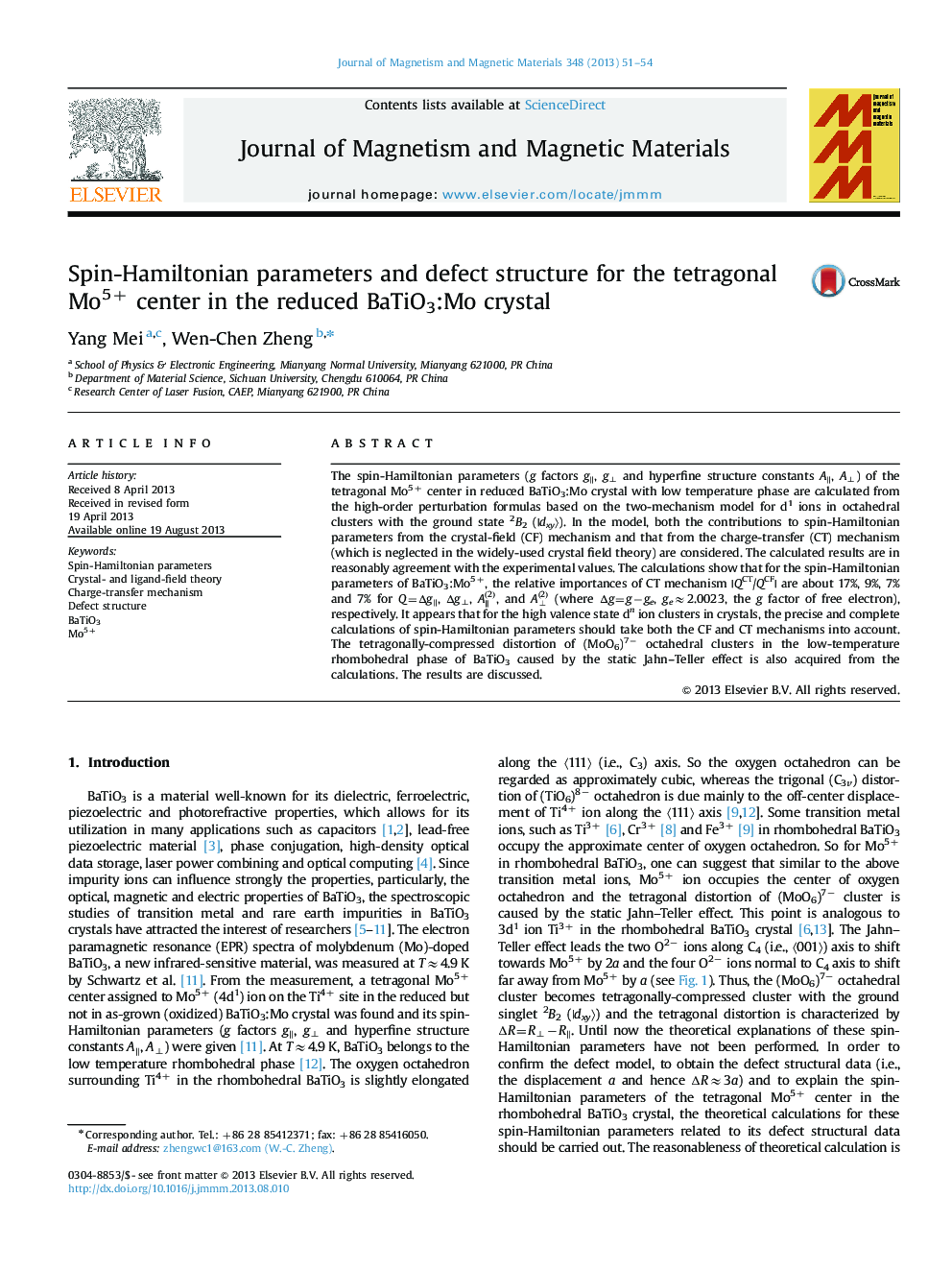| Article ID | Journal | Published Year | Pages | File Type |
|---|---|---|---|---|
| 1799937 | Journal of Magnetism and Magnetic Materials | 2013 | 4 Pages |
Abstract
The spin-Hamiltonian parameters (g factors gâ, g⥠and hyperfine structure constants Aâ, Aâ¥) of the tetragonal Mo5+ center in reduced BaTiO3:Mo crystal with low temperature phase are calculated from the high-order perturbation formulas based on the two-mechanism model for d1 ions in octahedral clusters with the ground state 2B2 (|dxyã). In the model, both the contributions to spin-Hamiltonian parameters from the crystal-field (CF) mechanism and that from the charge-transfer (CT) mechanism (which is neglected in the widely-used crystal field theory) are considered. The calculated results are in reasonably agreement with the experimental values. The calculations show that for the spin-Hamiltonian parameters of BaTiO3:Mo5+, the relative importances of CT mechanism |QCT/QCF| are about 17%, 9%, 7% and 7% for Q=Îgâ, Îgâ¥, Aâ(2), and Aâ¥(2) (where Îg=gâge, geâ2.0023, the g factor of free electron), respectively. It appears that for the high valence state dn ion clusters in crystals, the precise and complete calculations of spin-Hamiltonian parameters should take both the CF and CT mechanisms into account. The tetragonally-compressed distortion of (MoO6)7â octahedral clusters in the low-temperature rhombohedral phase of BaTiO3 caused by the static Jahn-Teller effect is also acquired from the calculations. The results are discussed.
Keywords
Related Topics
Physical Sciences and Engineering
Physics and Astronomy
Condensed Matter Physics
Authors
Yang Mei, Wen-Chen Zheng,
